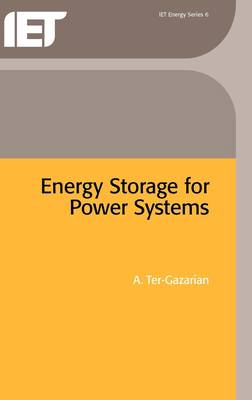
- Afhalen na 1 uur in een winkel met voorraad
- Gratis thuislevering in België vanaf € 30
- Ruim aanbod met 7 miljoen producten
- Afhalen na 1 uur in een winkel met voorraad
- Gratis thuislevering in België vanaf € 30
- Ruim aanbod met 7 miljoen producten
Omschrijving
Energy flow from many primary sources is not constant but depends on the season, time of day and weather conditions. Energy demand also varies with the same circumstances, but generally in reverse. Obviously there needs to be some way for energy suppliers to separate the processes of energy generation and consumption, by storing energy until it is needed.
Electricity is the most flexible and convenient form of energy for transmission and use but it is not economically possible to store electrical energy in significant quantities. Secondary energy storage systems can accept energy generated by a power system, convert it to a form suitable for storage, keep it for a certain time and then convert it into the form required by the consumer when it is needed. These systems are an essential tool in managing energy supplies.
This book is a comprehensive guide to the various types of secondary storage systems and an introduction to the multidisciplinary problem of choice of their types and parameters. It is chiefly aimed at students of electrical and power engineering, and design and research engineers concerned with the logistics of power supply. It will also be valuable to all those interested in the development of environmentally benign power supplies.
Specificaties
Betrokkenen
- Auteur(s):
- Uitgeverij:
Inhoud
- Aantal bladzijden:
- 244
- Taal:
- Engels
- Reeks:
Eigenschappen
- Productcode (EAN):
- 9780863412646
- Verschijningsdatum:
- 30/06/1994
- Uitvoering:
- Hardcover
- Formaat:
- Genaaid
- Afmetingen:
- 156 mm x 234 mm
- Gewicht:
- 526 g

Alleen bij Standaard Boekhandel
Beoordelingen
We publiceren alleen reviews die voldoen aan de voorwaarden voor reviews. Bekijk onze voorwaarden voor reviews.









